Auto start technology for manual cars offers convenience and efficiency, though it sparks debate among drivers due to its unique benefits and challenges.
What is Auto Start Technology?
Auto start technology enables vehicles to automatically start or restart the engine under specific conditions. In manual cars, it adapts to the clutch and gear system, allowing the engine to restart seamlessly when in neutral. This technology often includes sensors to detect gear position and clutch pedal status, ensuring safe and efficient operation. It integrates with remote start systems, offering convenience for drivers while maintaining safety protocols like anti-theft protections and engine kill switches. Unlike automatic cars, manual transmissions require additional sensors to function properly with auto start systems.
Overview of Manual Transmission Cars
Manual transmission cars require driver engagement, using a clutch pedal and gearshift to change gears. They are popular for their control, fuel efficiency, and lower cost. However, they demand skill and attention, especially in stop-and-go traffic. Unlike automatics, manuals rely on driver input, making them less convenient in certain driving conditions. Despite this, many drivers prefer manuals for their driving experience and cost-effectiveness. The integration of auto start technology aims to enhance convenience without compromising the unique benefits of manual transmissions, addressing both driver demands and technological advancements in the automotive industry.
Why Auto Start is Desired for Manual Cars
Auto start technology is increasingly sought after for manual cars to enhance convenience, reduce emissions, and improve fuel efficiency. Drivers desire this feature to eliminate the need for frequent restarting, especially in heavy traffic. It simplifies city driving and minimizes the hassle of constant clutch engagement. Additionally, auto start aligns with modern eco-friendly trends by optimizing engine performance. However, its implementation requires careful integration with manual transmissions, addressing challenges like neutral gear detection and clutch pedal synchronization to ensure seamless functionality and maintain driver control, making it a practical yet complex upgrade for manual vehicles.

Benefits of Auto Start for Manual Cars
Auto start enhances driving convenience, boosts fuel efficiency, and reduces emissions, offering a modern solution for manual car owners seeking smoother, eco-friendly performance.
Convenience and Ease of Use
Auto start systems for manual cars simplify driving by eliminating the need for constant gear shifting, reducing driver fatigue in heavy traffic or frequent stop-and-go situations. These systems allow the car to engage automatically when the brakes are released, creating a seamless experience. This feature is particularly appealing for new drivers who may find manual transmissions challenging. By streamlining the driving process, auto start technology enhances overall comfort and accessibility, making manual cars more approachable for a broader range of drivers while maintaining the unique characteristics of manual transmissions.
Improved Fuel Efficiency
Auto start systems for manual cars optimize fuel consumption by reducing unnecessary engine idling. This technology ensures the engine operates only when needed, minimizing fuel waste during stops. In urban driving, where frequent halts occur, the system significantly lowers fuel usage. By automatically managing engine activity, auto start enhances overall efficiency, especially in traffic-heavy conditions. This feature not only saves fuel but also aligns with eco-friendly driving practices, making it a practical solution for environmentally conscious drivers who prefer manual transmissions.
Reduced Emissions
Auto start systems for manual cars contribute to lower emissions by minimizing engine idling. When the engine is not in motion, it produces harmful emissions. By automatically shutting off the engine during stops, this technology reduces emissions significantly. This feature is particularly beneficial in urban areas with frequent traffic lights and congestion. Lower emissions not only benefit the environment but also comply with stricter emissions regulations. This makes auto start systems an eco-friendly addition to manual cars, promoting sustainable driving while maintaining performance.
Enhanced Driver Experience
Auto start systems for manual cars enhance the driving experience by eliminating the need for constant clutch engagement in heavy traffic. This reduces driver fatigue and creates a smoother ride. The technology seamlessly restarts the engine when the car begins to move, offering uninterrupted acceleration. Additionally, it provides a more modern and convenient driving experience, appealing to those who appreciate advanced features. Drivers can enjoy a more relaxed commute, especially in urban environments with frequent stops and starts, making auto start a desirable upgrade for manual car enthusiasts.

Challenges of Implementing Auto Start for Manual Cars
Auto start systems for manual cars enhance the driving experience by eliminating the need for constant clutch engagement in heavy traffic. This reduces driver fatigue and creates a smoother ride. The technology seamlessly restarts the engine when the car begins to move, offering uninterrupted acceleration. Additionally, it provides a more modern and convenient driving experience, appealing to those who appreciate advanced features. Drivers can enjoy a more relaxed commute, especially in urban environments with frequent stops and starts, making auto start a desirable upgrade for manual car enthusiasts.
Neutral Gear Requirements
Auto start systems for manual cars require the vehicle to be in neutral gear to operate safely. This ensures the car doesn’t move unexpectedly when the engine restarts. A neutral gear sensor is essential to confirm the transmission’s position, preventing accidental engagement of gears. Some systems may also include a clutch pedal sensor for added safety. However, not all manual cars are compatible with auto start technology due to variations in transmission mechanisms. Manufacturers often restrict these systems to automatics, making aftermarket solutions challenging to install and calibrate properly for manual vehicles.
Clutch Pedal Integration
Clutch pedal integration is critical for auto start systems in manual cars, as it ensures the vehicle remains stationary during engine restart. Sensors detect the clutch pedal’s position, preventing accidental movement. For safety, many systems require the clutch to be pressed before the engine starts. However, integrating this feature into manual cars is complex due to varying transmission mechanisms. Some aftermarket solutions involve additional wiring or specialized sensors to monitor clutch engagement. Despite challenges, advancements in technology have made clutch pedal integration more reliable, enabling seamless auto start functionality for manual transmissions without compromising safety or performance.
Safety Concerns
Safety concerns with auto start systems for manual cars primarily revolve around unintended vehicle movement during engine restart. If the clutch pedal isn’t properly managed, the car could lurch forward, posing a risk in traffic or tight spaces. To mitigate this, modern systems often include fail-safes, such as requiring the clutch pedal to be pressed before restart. However, improper installation or sensor malfunctions can bypass these protections, leading to potential accidents. Ensuring precise integration of safety features and driver education on system operation are critical to minimizing risks associated with auto start technology in manual transmissions.
Manufacturer Restrictions
Many manufacturers impose restrictions on installing auto start systems in manual cars due to safety and technical challenges. They often void warranties if unauthorized systems are fitted, citing potential risks. Additionally, manufacturers may not provide official support for such modifications, leaving consumers reliant on aftermarket solutions. These restrictions are primarily aimed at preventing unintended vehicle movement and ensuring compliance with safety standards. As a result, drivers seeking auto start functionality must carefully navigate installation processes and consider the legal implications of modifying their vehicles beyond factory specifications.
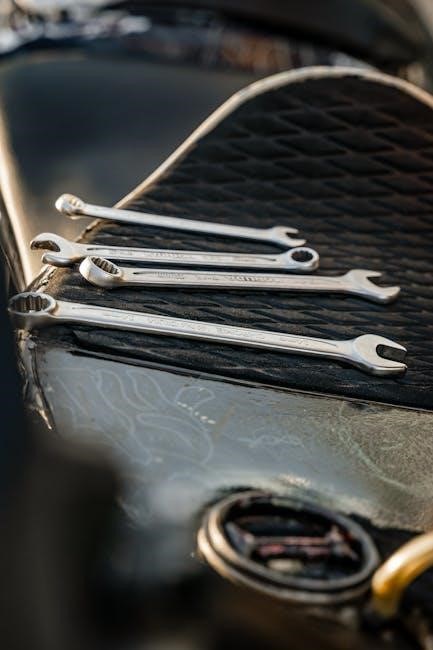
Installation Considerations for Auto Start Systems
Installing auto start systems for manual cars requires precise integration of neutral gear and clutch sensors, ensuring compatibility and adherence to safety protocols for reliable operation.
Neutral Gear Sensor
The neutral gear sensor is a critical component of auto start systems in manual cars, detecting when the transmission is in neutral. This sensor ensures the engine can start remotely without risk of unintended movement. It integrates seamlessly with the system’s electronics, providing accurate feedback to prevent accidents. Proper installation and calibration are essential to maintain safety and functionality, making it a vital part of the auto start mechanism for manual transmissions.
Clutch Pedal Sensor
The clutch pedal sensor is a vital component in auto start systems for manual cars, ensuring safe and proper operation. It monitors the clutch pedal’s position, detecting whether it is pressed or released. This sensor is essential for preventing accidental starts and ensuring the vehicle remains stationary during remote starts. Some systems require the clutch pedal to be fully pressed, while others may demand it to be released, depending on the manufacturer’s design. Proper installation and calibration of the clutch pedal sensor are critical to avoid malfunctions and ensure seamless functionality. It plays a key role in enhancing safety and convenience for drivers.
Remote Start Compatibility
Remote start compatibility for manual cars involves ensuring the system integrates seamlessly with the vehicle’s existing hardware and software. Modern remote start systems, such as those from Compustar and Viper, are designed to work with manual transmissions by incorporating specialized sensors. These sensors monitor the clutch pedal and neutral gear position to prevent unauthorized starts. Compatibility also requires proper installation by a certified technician to avoid voiding the vehicle’s warranty. Additionally, some systems offer smartphone app integration, allowing users to start their cars remotely with enhanced convenience and control. Ensuring compatibility is crucial for safe and reliable operation of the auto start feature.
Installation Safety Protocols
Installation of auto start systems in manual cars requires strict adherence to safety protocols to prevent accidents or damage. This includes disconnecting the battery before starting work to avoid electrical shocks or short circuits. Technicians must ensure all sensors, such as the neutral gear and clutch pedal sensors, are correctly calibrated to prevent unintended starts. Additionally, testing the system in a controlled environment is essential to verify proper functionality. Following manufacturer guidelines and seeking certification from professionals ensures a safe and reliable installation process for manual transmission vehicles.

Safety Features of Auto Start Systems
Auto start systems for manual cars include advanced safety features like anti-theft protections, engine kill switches, and brake pedal activation to ensure secure and reliable operation.
Anti-Theft Protections
Auto start systems for manual cars often include advanced anti-theft protections. These features prevent unauthorized access by ensuring the vehicle cannot be started or moved without the correct key fob. Some systems integrate rolling code encryption, making it difficult for thieves to intercept signals. Additionally, certain models may disable the engine if the key fob is not present, adding another layer of security. These measures help protect the vehicle from theft and unauthorized use, providing peace of mind for car owners. Modern systems are continuously updated to counter emerging theft techniques, ensuring robust protection for your manual car.
Engine Kill Switch
The engine kill switch is a critical safety feature in auto start systems for manual cars. It allows drivers to manually shut off the engine in emergencies, ensuring immediate control. This feature is particularly useful in situations where the vehicle needs to be stopped quickly, such as a potential theft or system malfunction. The kill switch integrates seamlessly with the auto start technology, providing an additional layer of safety without compromising convenience. It ensures the driver can always regain control of the vehicle, offering peace of mind and enhanced security for manual car owners.
Brake Pedal Activation
Brake pedal activation is a safety feature that ensures the auto start system only engages when the driver is ready to operate the vehicle. By requiring the driver to press the brake pedal before starting or stopping the engine, this feature prevents accidental starts and enhances overall safety. It integrates smoothly with manual transmissions, ensuring the car remains stationary until the driver intentionally activates the system. This measure is particularly important for manual cars, where unintended movement could occur if proper protocols aren’t followed, making it a vital component of auto start technology.
Manual Override Options
Manual override options provide drivers with the ability to deactivate the auto start system if needed, ensuring full control over the vehicle. This feature is particularly useful in situations where the system may malfunction or when the driver prefers to operate the car manually. Many modern auto start systems, such as those from Compustar and Viper, include a manual override that can be activated through a button or switch. This ensures safety and flexibility, allowing drivers to bypass the auto start function effortlessly. It’s a crucial feature for maintaining driver confidence and system reliability in manual transmission vehicles.
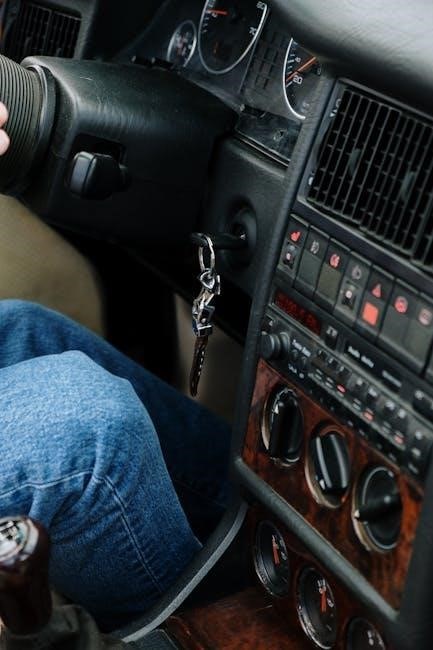
Popular Auto Start Systems for Manual Cars
Compustar, Viper, and Avital are top choices, offering reliable performance and safety for manual cars, with features like remote start and anti-theft protection.
Compustar Remote Start
Compustar remote start systems are highly regarded for manual cars, offering reliable performance and advanced safety features. They utilize two-way communication and LED confirmation for seamless operation. Designed specifically for manual transmissions, these systems ensure the vehicle is in neutral before starting, preventing unauthorized use. Compustar’s anti-theft protections and engine kill switch provide added security. With a range of up to 3,000 feet and smartphone integration, Compustar offers convenience and peace of mind. It’s a top choice for drivers seeking a secure and efficient auto start solution for their manual vehicles.
Viper Remote Start
Viper remote start systems are known for their advanced features and reliability, making them a popular choice for manual cars. They offer a user-friendly interface with two-way communication, ensuring smooth engine activation. Viper systems include safety protocols like brake pedal activation and anti-theft protections, enhancing security for manual transmissions. With extended range and customizable settings, Viper provides convenience without compromising safety. Their products are designed to integrate seamlessly with manual vehicles, offering a robust solution for drivers seeking remote start functionality.
Avital Remote Start
Avital remote start systems provide innovative solutions for manual cars, combining ease of use with advanced safety features. Known for their reliability, Avital systems offer 1-way and 2-way remote options, ensuring seamless engine activation. They feature anti-theft protections, manual override capabilities, and compatibility with manual transmissions. Avital’s designs prioritize safety, requiring brake pedal activation for remote start. With versatile installation options and minimal adjustments needed, Avital remote starts are a practical choice for drivers seeking convenience without compromising security. Their systems are well-regarded for their performance and ease of integration in manual vehicles.
Directed Electronics Systems
Directed Electronics Systems are renowned for their advanced remote start solutions, offering seamless integration with manual cars. Their systems are designed to enhance convenience while maintaining safety and reliability. With features like 2-way communication and advanced security protocols, Directed Electronics ensures a smooth remote start experience. Their products are compatible with manual transmissions and include safeguards like brake pedal activation. Known for their durability and user-friendly designs, Directed Electronics Systems are a trusted choice for drivers seeking innovative auto start solutions tailored to manual vehicles, providing both comfort and peace of mind.
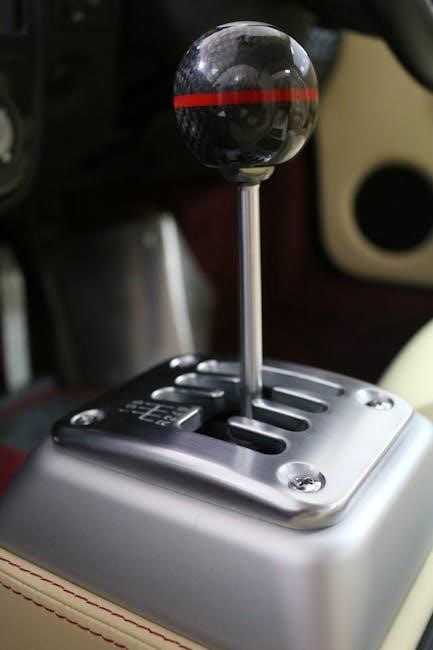
Legal and Insurance Implications
Auto start systems for manual cars may require special insurance coverage and legal compliance, including certification processes to ensure safety and regulatory standards are met properly.
Insurance Requirements
Installing an auto start system in a manual car may require specialized insurance coverage due to the unique nature of the technology. Insurance companies often demand proof of proper installation and certification to ensure the system meets safety standards. Additionally, some insurers may increase premiums for vehicles equipped with auto start systems, as they can be more complex and expensive to repair. It’s crucial to verify with your insurance provider before installation, as certain policies may not cover unauthorized modifications. Failure to comply with insurance requirements could result in denied claims or policy cancellation. Always check manufacturer guidelines and local regulations to ensure full coverage and compliance.
Legal Restrictions on Remote Start
Legal restrictions on remote start systems for manual cars vary by region and country. Some jurisdictions prohibit the use of remote start due to concerns about emissions, noise, and unauthorized vehicle operation. In areas where remote start is allowed, strict guidelines often apply, such as requiring the vehicle to be stationary, in park or neutral gear, and ensuring the brake pedal is engaged. Manufacturers and installers must comply with local laws to avoid penalties. Additionally, some regions mandate certification for remote start systems to ensure they meet safety and environmental standards. Always consult local authorities to ensure compliance and avoid legal issues.
Vehicle Certification Process
The vehicle certification process for auto start systems involves ensuring compliance with safety and regulatory standards. This includes inspections, documentation, and testing to verify the system’s functionality under various conditions. Authorities may require detailed modification lists to assess compliance with emissions and safety norms. The certification ensures the auto start system operates safely and efficiently, meeting legal requirements. Once approved, the vehicle is deemed compliant, allowing legal operation of the auto start feature. This process varies by region but is essential for maintaining safety and regulatory adherence.
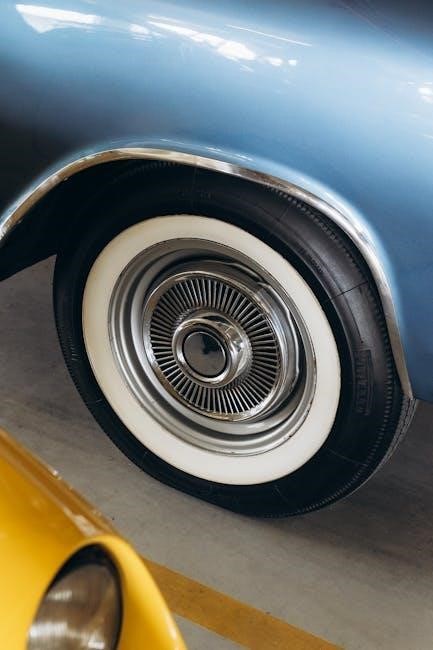
Maintenance and Troubleshooting
Regular maintenance is essential for auto start systems, including sensor checks and software updates. Addressing common issues promptly ensures reliable performance and prevents potential malfunctions over time.
Common Issues with Auto Start Systems
Common issues with auto start systems include sensor malfunctions, software glitches, and compatibility problems with manual transmissions. Drivers often report delays in engine response, which can be frustrating. Additionally, improper installation or worn-out components like clutch pedals and neutral gear sensors can disrupt functionality. Some users also experience unintended engine shutdowns or failure to start. These issues highlight the importance of proper installation and regular maintenance. Despite these challenges, advancements in technology continue to address these problems, offering improved reliability for manual car owners seeking convenience and efficiency.
Troubleshooting Steps
Troubleshooting auto start systems for manual cars involves systematic checks. First, ensure the neutral gear sensor is functioning correctly and adjusted properly. Inspect the clutch pedal sensor for wear or misalignment. Verify remote start compatibility with your vehicle’s make and model. Check system settings to ensure all parameters are configured correctly. Review the owner’s manual for specific instructions. If issues persist, perform a hard reset by disconnecting the battery for 30 seconds. Finally, consult a professional installer or manufacturer support for unresolved problems. Regular maintenance and updates can help prevent recurring issues and ensure smooth operation.
Regular Maintenance Tips
Regular maintenance is crucial for optimal performance of auto start systems in manual cars. Check the neutral gear sensor and clutch pedal sensor for proper alignment and functionality. Ensure all wiring connections are secure and free from corrosion. Update the system software periodically to resolve bugs and enhance features. Test the remote start functionality regularly to ensure reliability. Clean sensors and switches to prevent interference. Inspect the battery health and connections to avoid startup issues. Schedule professional inspections annually to address potential issues early. Consistent upkeep ensures smooth operation and extends system longevity.
Future of Auto Start for Manual Cars
The future of auto start for manual cars lies in advanced sensor technology and seamless integration with modern driving systems. As manufacturers refine neutral gear and clutch pedal sensors, reliability will improve. Enhanced safety features, such as improved anti-theft systems and smarter engine kill switches, are expected to address current concerns. Additionally, advancements in remote start compatibility will make these systems more accessible and user-friendly. The evolution of auto start technology promises to bridge the gap between convenience and the unique demands of manual transmissions, offering drivers the best of both worlds.
Final Thoughts on Benefits and Challenges
Auto start for manual cars balances convenience and efficiency with technical challenges. While it enhances fuel savings and reduces emissions, issues like neutral gear requirements and clutch integration persist. Drivers appreciate the seamless experience, but safety and manufacturer restrictions remain concerns. Despite advancements, not all manual car owners find auto start appealing. As technology evolves, these systems may become more refined and widely accepted. For now, weighing the benefits against potential drawbacks is crucial for those considering adoption, ensuring alignment with insurance and manufacturer guidelines for optimal performance and safety.
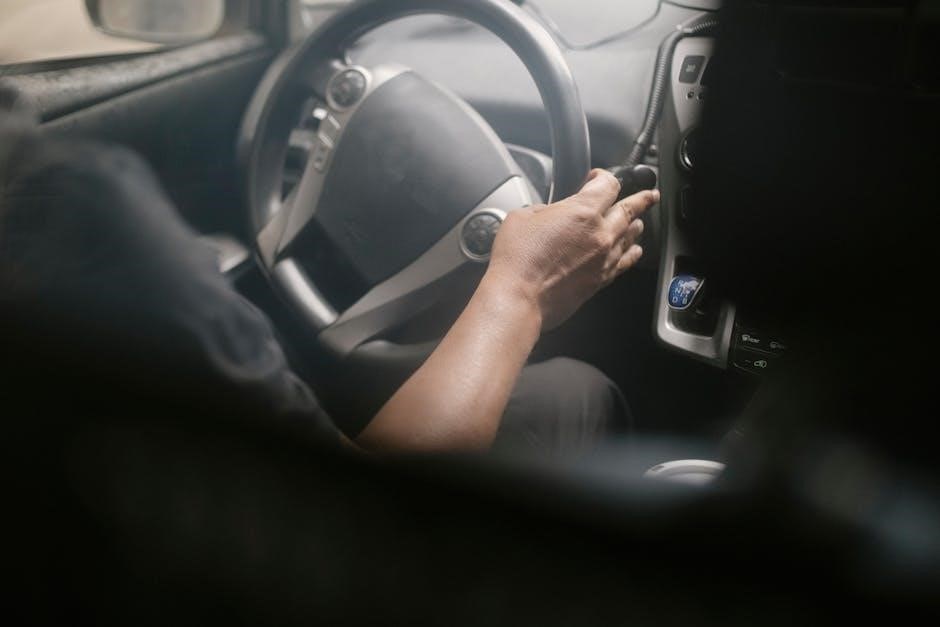
References and Further Reading
Explore manufacturer guidelines, expert reviews, and articles on auto start systems for manual cars to gain deeper insights and practical advice for installation and maintenance.
Recommended Resources
For comprehensive insights, explore manufacturer guidelines and expert reviews from trusted automotive publications. Popular brands like Compustar, Viper, and Avital offer detailed guides on their systems. Additionally, consult forums and specialized automotive websites for real-world experiences and installation tips. Technical manuals and installation guides from reputable sources provide step-by-step instructions for DIY enthusiasts. Ensure to research local laws and insurance requirements for remote start systems. Stay updated with industry advancements and safety standards to make informed decisions for your manual car.
Manufacturer Guidelines

Most manufacturers do not officially support auto start systems for manual cars, but brands like Compustar and Avital offer solutions with specific guidelines. Ensure your system includes a neutral gear sensor and clutch pedal integration for safe operation. Always follow the manufacturer’s installation protocols to avoid voiding warranties or compromising safety. Check for compliance with local regulations and ensure the system includes anti-theft protections and brake pedal activation. Proper installation by a certified technician is crucial to maintain reliability and legal compliance. Failure to adhere to guidelines can lead to system malfunctions or safety risks.
Expert Reviews and Articles
Experts highlight that auto start systems for manual cars are gaining traction, with brands like Compustar and Viper leading innovation. Reviews praise these systems for their seamless integration and enhanced convenience, particularly in urban driving. However, some critics argue that they can feel intrusive for purist drivers who value manual control. Technical articles emphasize the importance of proper installation and compatibility checks to avoid issues. Many experts recommend Directed Electronics Systems for their robust safety features and user-friendly designs. Overall, while opinions vary, auto start systems are increasingly seen as a practical solution for modern drivers.
